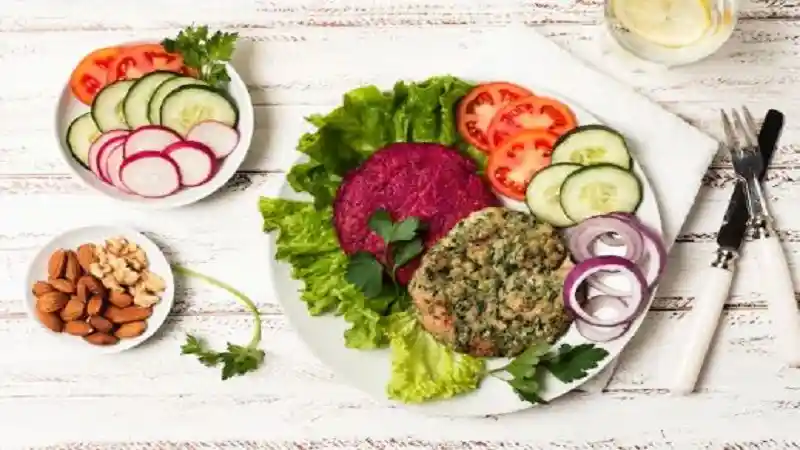In today’s fast-moving world, where fast food dominates every corner, people are slowly rediscovering the importance of mindful eating. The concept of healthy food justalittlebite isn’t about dieting or restrictions — it’s about balance, nourishment, and sustainable choices that support both the body and the planet. This modern approach to eating blends nutritional science, cultural diversity, and environmental consciousness to create a way of living that’s not only delicious but also deeply meaningful.
1. Understanding the Modern Meaning of “Healthy Food”
The idea of healthy food has evolved dramatically. Once, it simply meant eating vegetables and avoiding sweets. Today, it means making informed, intentional choices that align with one’s personal health goals and global values.
Healthy eating is no longer a one-size-fits-all concept. For one person, it might mean going plant-based. For another, it could mean managing portion sizes or cutting down on refined sugar. What remains constant, however, is the goal: to provide the body with the nutrients it needs to function at its best.
According to the World Health Organization (WHO), a healthy diet should emphasize fruits, vegetables, whole grains, lean protein, and limited salt, sugar, and trans fats. But beyond guidelines, there’s a growing movement toward conscious consumption — understanding where food comes from and how it affects the planet.
2. The Rise of Conscious Eating in the Digital Age
Social media, blogs, and online platforms like Just a Little Bite have reshaped how we view food. People are no longer passive eaters; they’re active learners, exploring how ingredients affect mood, energy, and longevity.
The global shift toward conscious eating is driven by several factors:
-
Information Accessibility: Nutrition data, ingredient transparency, and expert insights are now just a click away.
-
Wellness Culture: Fitness influencers and dietitians share real-life results, inspiring millions to adopt better eating habits.
-
Climate Awareness: More consumers understand the link between food production and environmental impact.
For example, the Global Food Trends Report 2024 revealed that 68% of millennials prefer brands with sustainable sourcing and clear nutritional labeling. This proves that “healthy” is no longer just personal — it’s ethical and environmental too.
3. What Makes Food Truly Healthy? The Science Behind It
Behind every colorful salad or smoothie bowl lies nutritional science. A truly healthy food plate is a balanced combination of:
-
Macronutrients: Proteins, carbohydrates, and fats in appropriate ratios.
-
Micronutrients: Vitamins and minerals that support metabolism and immunity.
-
Hydration and Fiber: Essential for digestion and toxin removal.
3.1. Proteins — The Building Blocks
Protein supports muscle growth, brain function, and hormonal balance. Lean meats, fish, tofu, lentils, and quinoa are great examples of protein-rich foods that fit into diverse diets.
3.2. Carbohydrates — Energy Fuel
Complex carbs such as oats, brown rice, and sweet potatoes provide lasting energy and help stabilize blood sugar levels.
3.3. Healthy Fats — The Unsung Heroes
Avocados, nuts, olive oil, and chia seeds contain essential fatty acids that protect heart health and brain function.
A 2023 Harvard Health review confirmed that diets rich in plant-based proteins and unsaturated fats reduce the risk of chronic diseases by up to 30%.
This scientific backing reinforces that healthy food isn’t about restriction — it’s about smart inclusion.
4. Global Perspectives: How Cultures Interpret Healthy Eating
Health and food are deeply cultural. What counts as healthy in one region might differ in another — yet the underlying philosophy remains similar: moderation and balance.
4.1. The Mediterranean Model
This diet emphasizes olive oil, fish, nuts, and fresh produce. Studies show it reduces cardiovascular disease risk and supports longevity. It’s a UNESCO-recognized cultural heritage for its health and social value.
4.2. The Japanese “Washoku” Approach
Japan’s traditional cuisine, rich in vegetables, fermented foods, and seafood, is credited with the nation’s high life expectancy. Smaller portions and mindful eating rituals contribute to overall wellness.
4.3. South Asian Balance
In South Asia, Ayurveda promotes balancing the body’s energy through diverse foods and spices. Turmeric, ginger, and lentils, for example, are both flavorful and functional.
4.4. Nordic Simplicity
Nordic diets emphasize whole grains, root vegetables, and seafood — offering a sustainable model that aligns with modern environmental goals.
These diverse approaches show that healthy eating transcends borders. It’s a shared human pursuit — one that connects people through nourishment, tradition, and mindfulness.
5. The Psychology of Eating: Why Mindset Matters
Physical health isn’t only shaped by what you eat — it’s also influenced by how you eat.
In modern nutrition psychology, mindful eating is gaining traction. It encourages individuals to slow down, savor food, and reconnect with their senses. Research from the American Psychological Association (APA) suggests that mindful eating helps reduce overeating and emotional stress by 25–35%.
Some practical ways to adopt mindful eating include:
-
Eating without distractions like screens.
-
Appreciating the aroma, texture, and taste of each bite.
-
Listening to hunger and fullness cues.
-
Practicing gratitude before and after meals.
This mental shift turns food from a mechanical habit into a joyful, healing experience.
6. Technology’s Role in Promoting Healthy Food Choices
Digital innovation is transforming how we approach nutrition. From AI-powered meal planning apps to smart kitchen devices, technology has become a reliable wellness companion.
6.1. Personalized Nutrition
Platforms like MyFitnessPal or NutriSense use data to tailor meal plans according to calorie needs, allergies, and health goals.
6.2. Food Transparency
Blockchain and QR-code labeling help trace the origin of ingredients, ensuring cleaner, safer food options.
6.3. Healthy Recipe Communities
Websites like Just a Little Bite showcase easy-to-follow recipes, helping busy individuals prepare nutritious meals at home.
In this digital transformation, healthy food justalittlebite represents the merging of technology and tradition — making health both accessible and enjoyable.
7. Real-World Examples: How Healthy Food Transforms Lives
Across the globe, people are witnessing life-changing benefits through small, consistent dietary shifts.
-
Case 1: Maria, a 32-year-old from Spain, reversed early signs of insulin resistance by switching to a Mediterranean-inspired diet. Within six months, her blood sugar normalized, and her energy improved.
-
Case 2: Rahim, a Pakistani software engineer, replaced sugary drinks with infused water and added lentil-based meals to his routine. He lost 8 kg and improved his sleep quality.
-
Case 3: Emma, a student in Canada, used meal-prepping apps to plan balanced lunches. She reported better focus and reduced anxiety during exams.
These stories illustrate that healthy food isn’t about perfection — it’s about persistence. Even “just a little bite” of change can yield lasting results.
8. Common Myths About Healthy Eating (and the Truth Behind Them)
Despite widespread awareness, misconceptions persist. Let’s debunk a few common myths:
| Myth | Reality |
|---|---|
| Healthy food is expensive | Seasonal and local foods are both affordable and nutritious. |
| Carbs are bad | Complex carbs are vital for energy; avoid only refined ones. |
| You must eat salads only | Healthy eating includes cooked, hearty, and flavorful meals. |
| Supplements can replace real food | Whole foods provide fiber and phytonutrients that pills can’t match. |
| Cheat days ruin progress | Occasional indulgence supports long-term consistency. |
Understanding these truths makes healthy eating more approachable and less intimidating.
9. Sustainability: The Future of Healthy Food
Health and sustainability are now inseparable. Every meal choice affects not just the body but the ecosystem.
A Lancet Commission report found that shifting to plant-forward diets could reduce greenhouse gas emissions by 49% while improving population health outcomes.
9.1. Reducing Food Waste
Mindful portioning, composting, and reusing leftovers can significantly cut down household waste.
9.2. Supporting Local Farmers
Buying local reduces transportation emissions and supports community economies.
9.3. Embracing Plant-Based Options
Even reducing meat consumption one day a week — the “Meatless Monday” movement — can lower one’s carbon footprint dramatically.
These efforts align perfectly with modern wellness trends, where personal health and planetary well-being go hand in hand.
10. The Role of Media and Education
Media plays a dual role — it can mislead or motivate. Educational campaigns, documentaries like “Forks Over Knives”, and platforms promoting evidence-based nutrition help spread awareness.
In schools, nutrition education programs teach children how to identify healthy foods early. Meanwhile, public health initiatives encourage workplaces to provide nutritious meal options.
Such systemic changes ensure that healthy food isn’t just a personal choice — it becomes a social norm.
11. Practical Tips to Build a Healthier Plate
You don’t need to overhaul your entire lifestyle to eat better. Start small:
-
Half Your Plate Vegetables: Adds fiber, color, and antioxidants.
-
Hydrate Before Meals: Prevents overeating and improves digestion.
-
Swap Refined for Whole: Choose brown rice, whole wheat, or oats.
-
Plan Ahead: Prep ingredients to avoid impulsive, unhealthy eating.
-
Cook at Home: Control oil, salt, and sugar easily.
-
Eat Seasonal: Local produce has better taste and nutrients.
-
Prioritize Sleep: Good rest supports metabolism and appetite balance.
These simple habits compound over time to create lasting health improvements.
12. Expert Opinions: Why Small Steps Matter
According to Dr. Walter Willett, Professor of Nutrition at Harvard T.H. Chan School of Public Health:
“Sustainable dietary changes begin with small, consistent actions. It’s not about perfection, but persistence.”
Similarly, nutritionist Rujuta Diwekar emphasizes eating traditional foods in moderation:
“Local, seasonal, and home-cooked meals are nature’s blueprint for wellness.”
These expert insights align perfectly with the philosophy behind healthy food — making it achievable for everyone, everywhere.
13. The Future of Food and Wellness
The future of healthy food lies in integration — combining tradition, innovation, and personalization. AI nutritionists, vertical farming, lab-grown proteins, and plant-based alternatives are already shaping what we’ll eat in the next decade.
Consumers will demand transparency, functionality, and flavor — not just calories. Food brands that embrace ethical sourcing and nutrient density will thrive in this evolving market.
Health is no longer a luxury. It’s becoming a lifestyle standard.
Conclusion: The Lasting Power of Healthy Food Justalittlebite
The journey toward wellness begins with awareness and a single step — or even just a single bite. The philosophy behind healthy food justalittlebite, reminds us that transformation doesn’t require drastic measures. It’s about small, intentional choices that nurture both our bodies and the world around us.
By embracing conscious eating, sustainable habits, and technological tools, we can create a future where healthy food is accessible, enjoyable, and ethical. The world is already changing — one mindful bite at a time.

